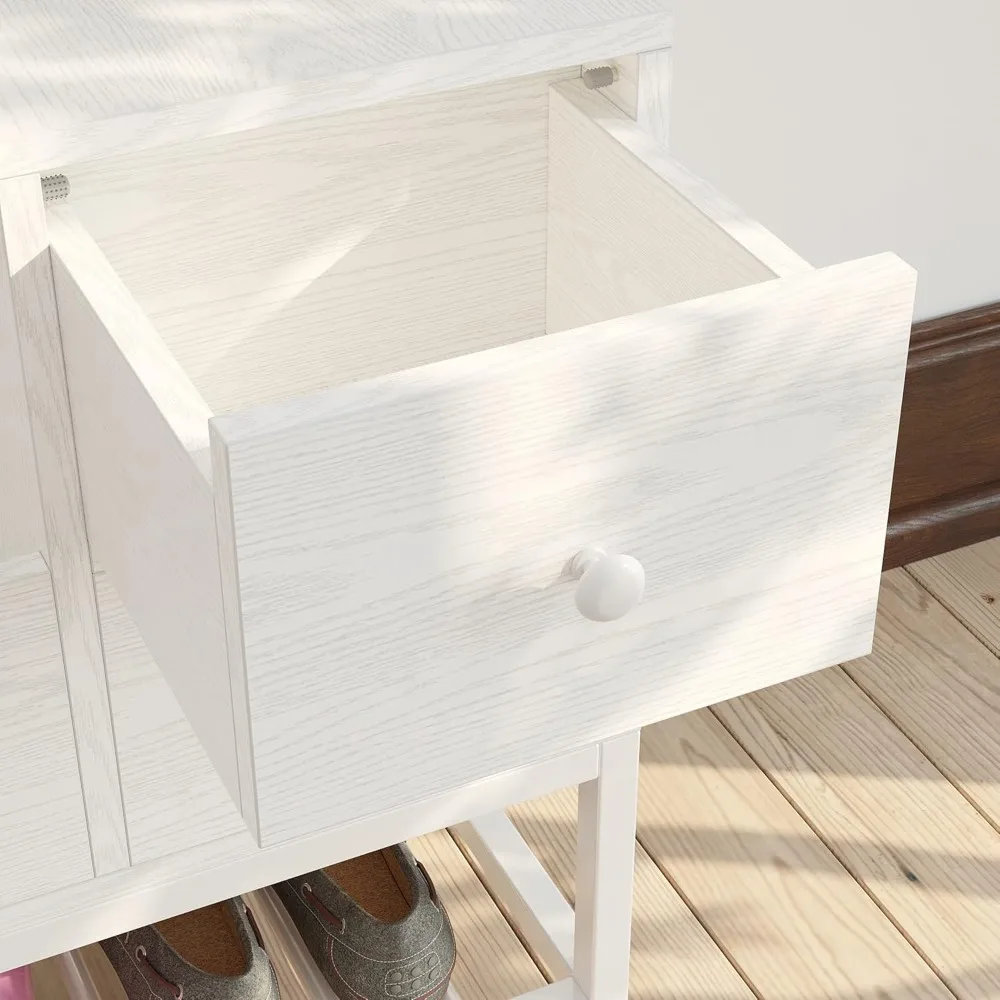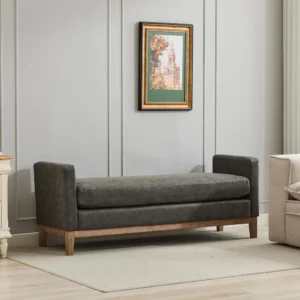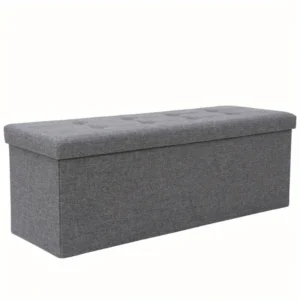1. Why Choose a Compact Bench: Smart Solutions for Modern Spaces
In today’s living environments where space comes at a premium, compact benches offer an elegant solution for both functionality and style. But what exactly makes a bench “compact”? Generally speaking, compact benches feature space-conscious dimensions (typically under 48 inches wide), may include folding capabilities, and often serve multiple purposes beyond just seating.
The advantages of incorporating compact benches into modern homes are numerous:
- Space efficiency – They occupy minimal floor space while providing maximum utility
- Versatility – They transition easily between different functions and rooms
- Aesthetic appeal – They add character without overwhelming your space
- Organization – Many designs include storage to reduce clutter
Compact benches solve multiple problems simultaneously, functioning as seating when you need it, concealing storage when you don’t, and consistently serving as an attractive décor element. These versatile pieces work wonderfully across your home—from providing a landing spot in space-saving entryway benches to offering extra seating in living areas or bedrooms.
Studies show that thoughtfully selected compact furniture can free up to 30% more usable space in the average room compared to traditional furniture arrangements. Throughout this guide, we’ll explore how to select the perfect compact bench that aligns with your specific needs, space constraints, and style preferences.
For those specifically looking to enhance smaller entrance areas, exploring space-saving entryway ideas can provide additional inspiration for your compact bench selection.
2. Assessing Your Needs: Matching Bench to Purpose
Before diving into bench shopping, take time to assess exactly what you need this piece to accomplish. Compact benches typically serve one or more of these primary functions:
- Entryway organization – A landing zone for mail, keys, shoes, and bags
- Additional seating – Extra spots for guests or daily activities
- Hidden storage – Concealing seasonal items, linens, or everyday essentials
- Decorative accent – Adding visual interest to an otherwise empty space
Ask yourself these critical questions to narrow your focus:
Purpose Assessment Checklist:
* What specific problem am I solving with this bench?
* Which room or area will house this piece?
* How frequently will it be used, and by whom?
* What items (if any) need to be stored inside or underneath?
Space Measurement Guidelines:
1. Measure width, depth, and height of your available space
2. Allow for 24-30 inches of clearance in front of the bench for comfortable seating
3. For entryways, ensure doors can fully open without obstruction
4. Consider traffic flow around the bench’s placement
Budget expectations vary based on materials and features, but generally range from $100-200 for basic models, $200-400 for mid-range options with storage features, and $400+ for premium designs with superior materials and craftsmanship.
When maximizing small spaces with smart entryway benches, prioritize features that directly address your primary needs rather than being swayed by attractive but less functional elements. For extremely tight spaces, our collection of narrow entryway benches provides specialized solutions designed specifically for limited dimensions.
3. Entryway & Mudroom Compact Benches: Creating Organized First Impressions
Entryways benefit tremendously from compact bench solutions as these high-traffic areas often suffer from limited space while demanding maximum functionality. The right entryway bench transforms chaos into order while making a welcoming first impression for your home.
Essential features to look for in entryway benches include:
- Shoe storage – Either open shelving beneath the seat or compartmentalized cubbies
- Coat hooks or racks – Integrated vertical storage for jackets and bags
- Cubby systems – Small compartments for mail, keys, gloves, and other essentials
- Seating surface – Comfortable spot for putting on or removing footwear
For high-traffic entrance areas, materials matter significantly. Look for:
- Solid hardwoods – Offer exceptional durability and classic appeal
- Metal frames – Provide industrial strength with minimal visual weight
- Performance fabrics – Resist staining and easily withstand daily use
Space-saving designs specifically engineered for narrow hallways often incorporate vertical storage elements, slimmer profiles (12-14 inches deep instead of standard 16-18 inches), and multi-functional components that maximize utility without overwhelming the space.
Finding the perfect balance between functionality and aesthetic appeal is particularly important in entrance areas. The best small benches for entryways often feature clean lines and lighter visual weight while still incorporating practical storage elements like those found in our entryway bench storage collection.
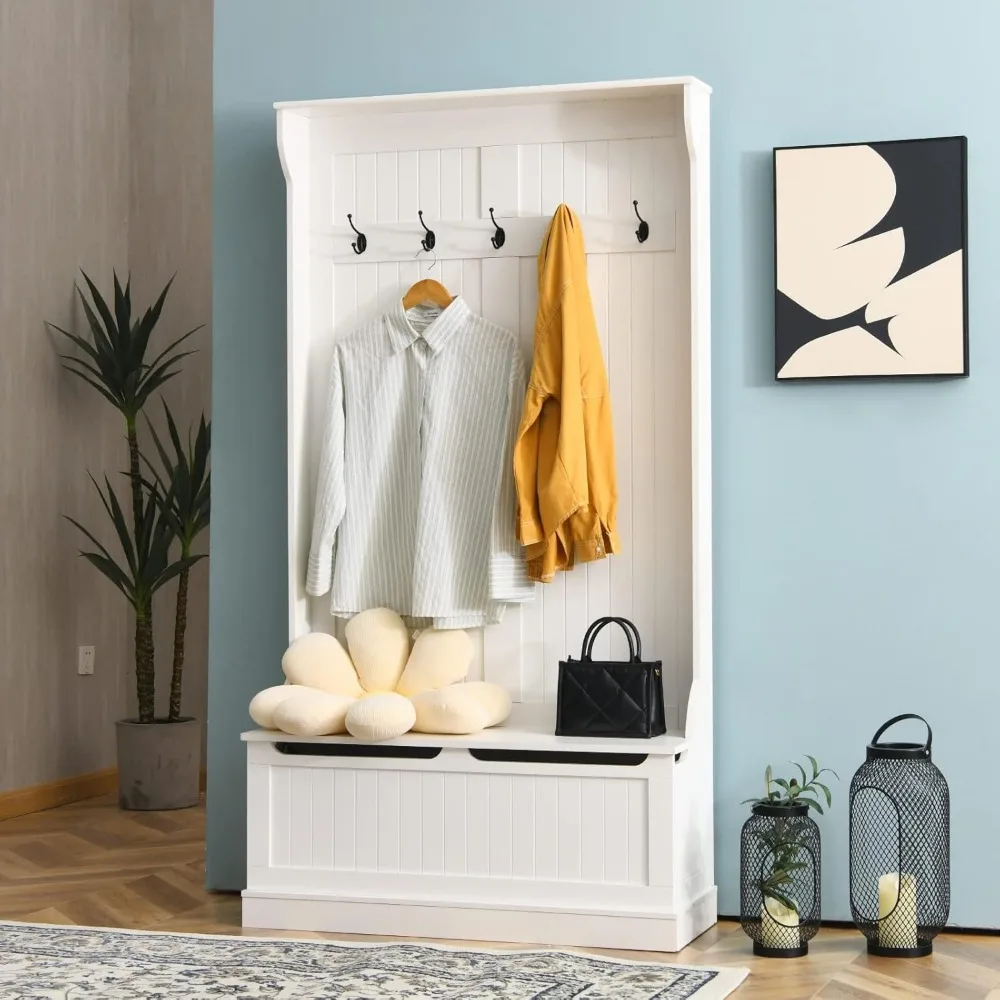
4. Living Space Compact Benches: Versatile Seating & Storage Solutions
Beyond entryways, compact benches offer elegant solutions throughout your home. Each living space presents unique opportunities for these versatile pieces:
Window Seat Benches transform underutilized window areas into cozy reading nooks while preserving natural light. Typically 14-18 inches deep, these benches create inviting spots without protruding too far into the room.
End-of-Bed Benches serve double duty, providing convenient seating for dressing while offering concealed storage for extra bedding, seasonal clothing, or personal items. Most measure 36-48 inches wide—approximately half the width of a queen mattress—making them proportional while maximizing floor space.
Living Room Accent Benches deliver extra seating when entertaining without the bulk of additional armchairs. Their low profile (typically 18-20 inches tall) allows them to slide discreetly under console tables when not in use.
Dining Benches accommodate more people than individual chairs while tucking completely beneath tables between meals. A 48-inch bench can seat two adults comfortably yet occupies minimal visual space.
When considering storage benches, you’ll encounter two primary designs:
- Fixed-top benches – Feature designated openings or drawers, allowing access without moving items on top
- Hinged-top storage benches – Provide one large storage compartment beneath the entire seat
Compared to traditional seating options, compact benches can save up to 60% of floor space while offering up to 8 cubic feet of hidden storage in hinged-top designs. For added comfort, consider options from our entryway bench cushion collection that provide both support and style.
When working with particularly narrow spaces, our guide on choosing the perfect bench for tight hallways offers specialized advice for maximizing even the most challenging areas.
5. Essential Features: What Makes a Quality Compact Bench
Identifying quality features ensures your compact bench will remain beautiful and functional for years to come. Here’s what to evaluate:
Weight Capacity
* Basic decorative benches: 200-250 lbs
* Standard seating benches: 300-400 lbs
* Heavy-duty multi-person benches: 450+ lbs
* Always verify weight ratings, especially for regular multi-person use
Material Quality Indicators
* Solid wood: Look for kiln-dried hardwoods like oak, maple, or walnut with minimal knots
* Engineered wood: Seek furniture-grade plywood rather than particle board or MDF for load-bearing elements
* Metal: Check for 16-gauge or thicker steel with proper welding at stress points
* Avoid materials that flex or bow when moderate pressure is applied
Construction Details for Durability
* Traditional joinery (mortise and tenon, dovetail) outperforms simple butt joints
* Corner blocks and reinforcement panels add significant stability
* Screws provide stronger connections than staples or nails
* Load-bearing surfaces should feature supportive bracing
Upholstery Considerations
* Performance fabrics with 15,000+ double rub count for high-traffic areas
* Removable cushions allow for cleaning and eventual replacement
* Water-repellent treatments provide practical protection
* Firmly attached, non-sagging cushioning maintains appearance over time
Storage Mechanisms
* Soft-close hinges prevent pinched fingers and loud slams
* Hydraulic lifts support lids in open position for safe access
* Dovetailed drawer construction indicates quality craftsmanship
* Smooth-gliding drawer hardware prevents sticking
Quality compact benches with proper care typically last 7-15 years depending on materials and use patterns. For specialized storage needs, our collection of shoe storage benches combines these quality features with practical organization solutions.
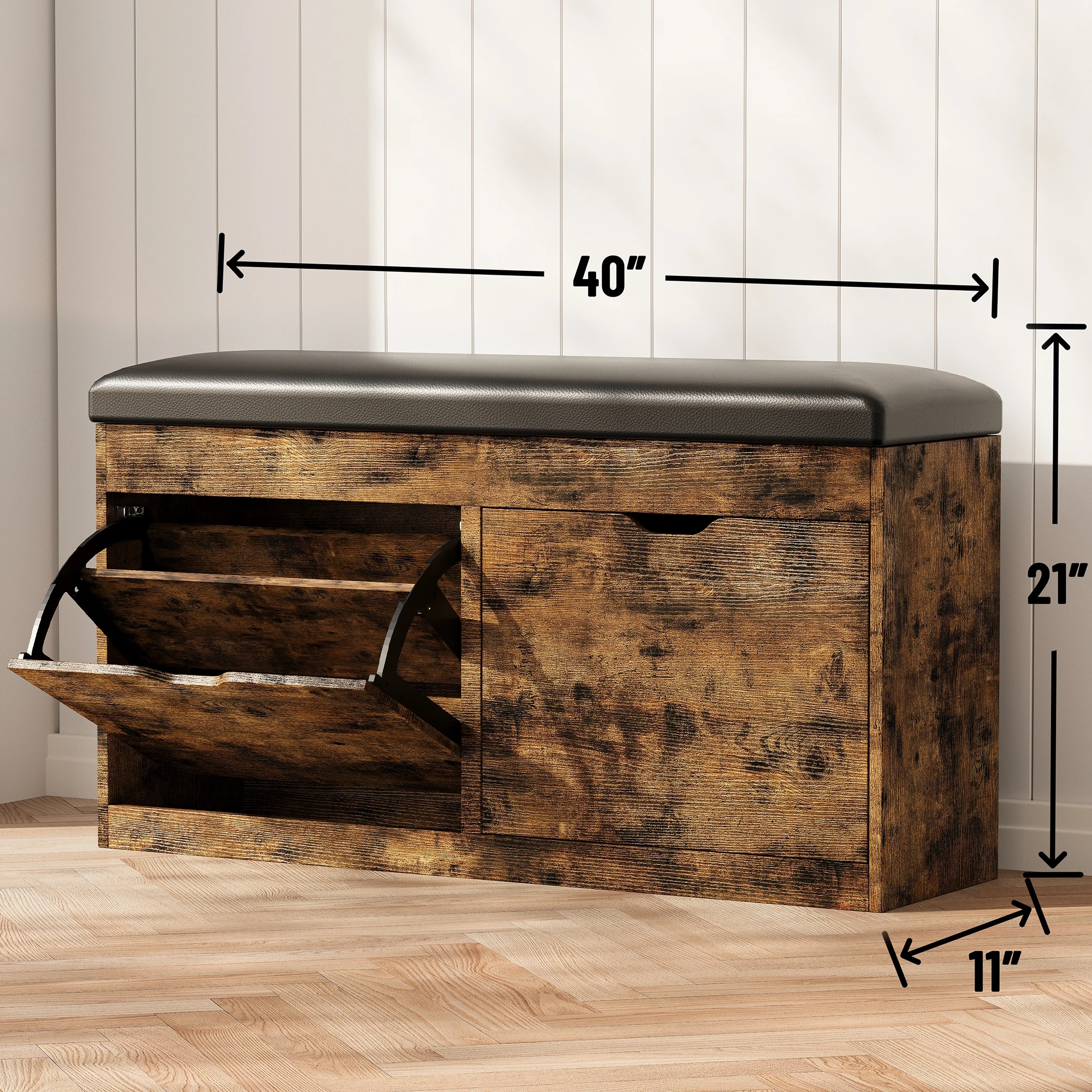
6. Maximizing Space: Smart Design Elements for Compact Areas
The true genius of compact benches lies in their ability to maximize functionality while minimizing spatial footprint. These smart design principles can transform even the most limited areas:
Dual-purpose design elements eliminate the need for multiple furniture pieces. A bench with integrated coat hooks replaces both a separate bench and wall-mounted rack, saving approximately 3-4 square feet of floor space and reducing visual clutter.
Space-saving mechanisms dramatically increase functionality without expanding dimensions:
* Fold-down tabletops that create temporary work surfaces
* Nesting components that can be expanded only when needed
* Modular sections that reconfigure for different situations
* Stackable elements that adapt to changing needs
Visual lightness makes compact benches appear less imposing in small spaces:
* Open bases create an illusion of more floor area
* Lighter finishes reflect more light, enhancing spaciousness
* Leggy designs allow visibility beneath, reducing visual weight
* Glass or transparent elements decrease optical density
Strategic placement enhances rather than crowds a room:
* Position benches along walls rather than floating in space
* Utilize otherwise awkward corners or recessed areas
* Replace bulkier furniture with streamlined bench alternatives
* Consider visual sight lines when determining height
When integrating with existing décor, seek opportunities for cohesion through complementary materials, consistent color palettes, and proportional scaling. For specific organizational strategies, explore our guide on how to organize a small entryway bench to maximize both functionality and aesthetics.
Entryway Bench with Cushion, Mudroom Bench with Cushion, Shoe Bench for Entryway
$1,186.63 Select options This product has multiple variants. The options may be chosen on the product pageCoat Rack Shoe Bench, Corner Entryway Bench, Corner Hall Tree, Shoe Bench for Entryway
$313.58 Select options This product has multiple variants. The options may be chosen on the product pageEntryway Bench with Back, Modern Entryway Bench, Shoe Bench for Entryway
Price range: $463.13 through $474.44 Select options This product has multiple variants. The options may be chosen on the product pageShoe Storage Bench for Entryway
$459.02 Select options This product has multiple variants. The options may be chosen on the product pageEntryway Bench with Shelf Storage, Shoe Bench for Entryway, Shoe Storage Bench
$194.08 Select options This product has multiple variants. The options may be chosen on the product pageCorner Entryway Bench, Entryway Bench with Cushion, Modern Entryway Bench, Shoe Bench for Entryway
$476.34 Select options This product has multiple variants. The options may be chosen on the product page
7. Material Considerations: Balancing Durability with Style
The materials used in your compact bench significantly impact its longevity, maintenance requirements, and aesthetic contribution. Here’s a comprehensive comparison to guide your selection:
| Material | Durability | Weight | Maintenance | Best For | Considerations |
|---|---|---|---|---|---|
| Solid Oak | High (10+ years) | Heavy | Moderate | High-traffic areas | Resistant to dents, classic appearance |
| Solid Maple | High (10+ years) | Medium-Heavy | Moderate | Everyday use | Takes finishes well, subtle grain |
| Solid Walnut | High (10+ years) | Medium | Moderate | Statement pieces | Rich color, premium appearance |
| Engineered Wood | Medium (5-8 years) | Light-Medium | Low | Budget-conscious | Look for furniture-grade plywood |
| Metal Frame | Very High (15+ years) | Medium | Low | Industrial style | Check welding quality at joints |
| Leather Upholstery | High with care | N/A | Moderate | Sophisticated spaces | Develops patina over time |
| Performance Fabric | Medium-High | N/A | Low | Family use | Stain-resistant, cleanable |
| Natural Fibers | Medium | N/A | High | Low-traffic areas | Sustainable but less durable |
Environmental considerations increasingly influence material selection. Sustainably harvested woods, recycled metals, and eco-friendly fabrics offer responsible alternatives without sacrificing quality. Additionally, consider how materials affect the bench’s weight and portability—particularly important if you’ll need to move it frequently.
For those appreciating timeless quality and natural warmth, our wood entryway bench collection features carefully selected hardwoods designed to withstand decades of daily use while developing character over time.
8. Style Guide: Finding a Compact Bench That Complements Your Décor
Your compact bench should seamlessly integrate with your home’s existing aesthetic while making an appropriate style statement. Consider these popular design directions:
Modern: Clean lines, minimal ornamentation, and often incorporating mixed materials like metal and wood. Look for geometric shapes, neutral colors, and uncluttered designs that emphasize function.
Traditional: Classic profiles featuring turned legs, rolled arms, tufted upholstery, and warm wood tones. These pieces offer timeless appeal and often showcase craftsman details like carved elements.
Farmhouse: Rustic yet refined with distressed finishes, simple silhouettes, and practical functionality. Natural woods with visible grain patterns and black metal hardware define this popular style.
Industrial: Raw materials, exposed mechanisms, and utilitarian designs. Metal frameworks, reclaimed wood, and minimal embellishment create pieces with authentic character and durability.
When selecting colors, consider:
* Neutral tones (grays, taupes, whites) for maximum versatility
* Wood finishes that complement existing furniture
* Strategic pops of color for seasonal refreshment through cushions
Design elements that create visual interest without overwhelming small spaces include:
* Contrasting materials (metal legs with wood seats)
* Textural elements (woven details, hammered metals)
* Subtle pattern play in upholstery
* Architectural details like beadboard or shiplap
For specialized recommendations tailored to contemporary homes, our collection of best compact modern benches showcases designs that balance minimalist aesthetics with practical functionality.
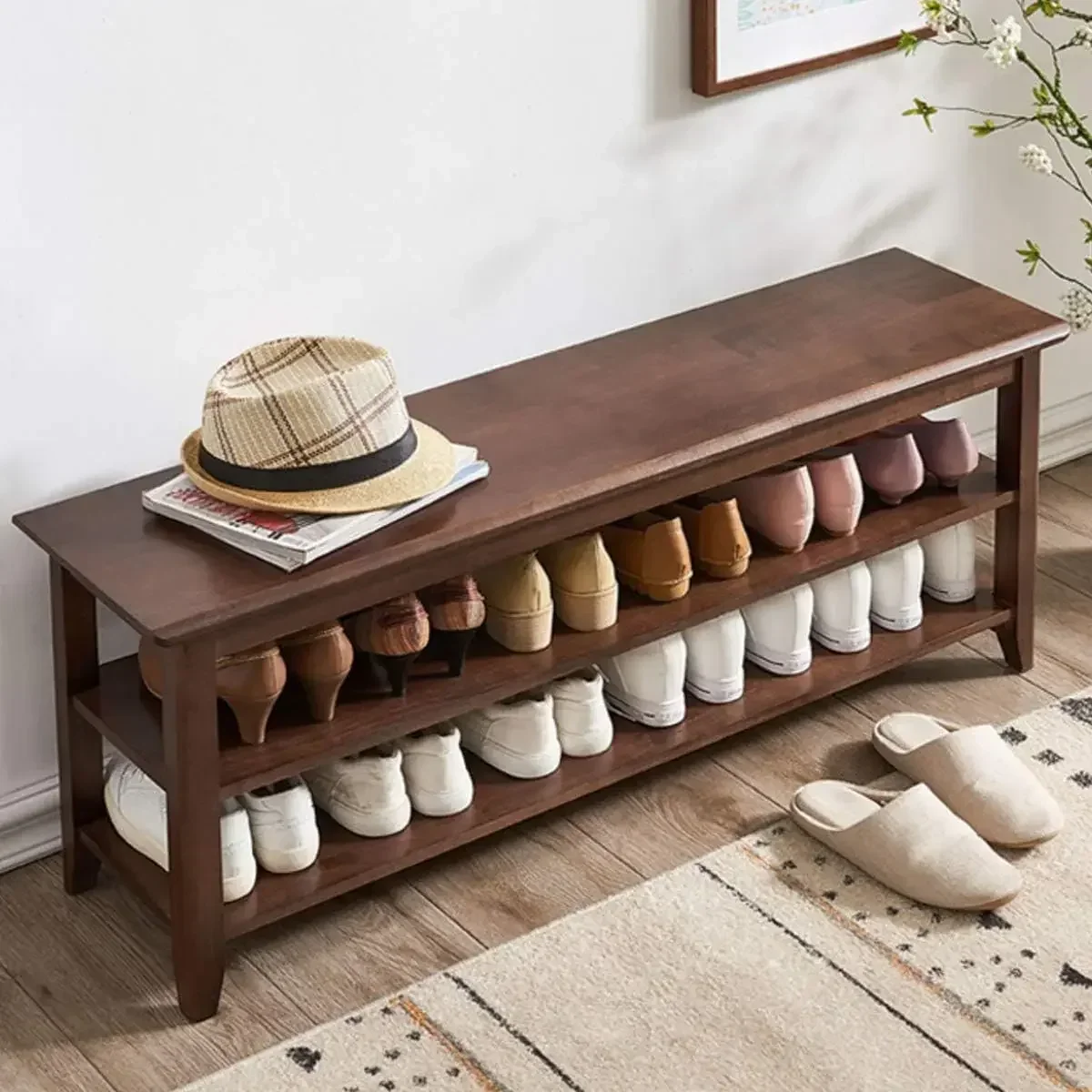
9. Assembly, Installation & Placement: Setting Your Bench Up for Success
Proper assembly and placement ensure your compact bench performs optimally while protecting both the piece and your home.
Assembly Expectations:
Most compact benches arrive partially or fully disassembled, requiring 30-60 minutes for complete setup. Standard packages include primary hardware but typically require basic tools:
* Phillips and flathead screwdrivers
* Allen wrenches (often included)
* Rubber mallet for gentle alignment
Complex models with storage mechanisms or electrical components may benefit from two-person assembly to ensure proper alignment and prevent strain on components.
Optimal Placement Guidelines:
* Entryways: Allow 24-36 inches of clearance for comfortable foot traffic
* Living spaces: Position against walls to maximize open floor area
* Bedrooms: Ensure drawers and storage lids have full clearance to open
* Dining areas: Leave 24 inches between bench and other furniture for easy access
Stability Considerations:
Different flooring surfaces require specific attention:
* Hardwood/laminate: Felt pads prevent scratching and sliding
* Carpet: Extended legs or coasters distribute weight evenly
* Uneven surfaces: Adjustable feet prevent wobbling and structural stress
To protect both your bench and home during installation, avoid dragging the assembled piece, use furniture sliders for positioning, and check for protrusions that might damage walls. For more specialized placement advice, our guide on space-saving entry benches for small homes offers room-specific recommendations to maximize your available area.
10. Is a Custom Compact Bench Right for You? Evaluating Made-to-Order Options
While standard compact benches work wonderfully for most situations, sometimes unique spaces or specific requirements call for customized solutions. Consider these factors when evaluating made-to-order options:
Q: When should I consider a custom bench instead of a standard model?
A: Custom benches make sense when you have unusual dimensions (particularly narrow or wide spaces), specific weight requirements, unique storage needs, or when matching existing furniture is essential.
Q: What are the main benefits of custom-made compact benches?
A: Made-to-order pieces offer precise dimensional fit, personalized storage configurations, exact material and color matching, and special features like charging stations or specialized compartments.
Q: What drawbacks should I be prepared for with custom options?
A: Custom pieces typically require 3-8 week lead times (versus immediate availability of stock items), premium pricing (generally 20-40% higher than comparable standard options), and often involve non-refundable deposits.
Q: What measurements and specifications should I prepare when ordering custom?
A: Beyond basic dimensions, note clearance requirements for doors and pathways, specific storage needs with measurements of items to be stored, and detailed information about connecting furniture pieces.
Q: How do I ensure my custom bench will meet my expectations?
A: Request material samples before final approval, ask for detailed drawings or 3D renderings, and clearly communicate both functional requirements and aesthetic preferences with specific examples.
11. Care & Maintenance: Protecting Your Investment
Proper maintenance significantly extends your compact bench’s lifespan while preserving its beauty and functionality.
Wood Care:
* Dust regularly with soft, dry cloth
* Clean spills immediately with slightly damp cloth
* Apply furniture polish or oil (matching your finish type) quarterly
* Avoid direct sunlight and maintain consistent humidity when possible
* Address scratches promptly with appropriate touch-up products
Metal Components:
* Wipe clean with damp cloth and mild soap as needed
* Dry thoroughly to prevent oxidation or spotting
* Apply appropriate metal polish annually for uncoated surfaces
* Check and tighten hardware periodically
* Treat any rust spots immediately with fine steel wool and protective coating
Upholstery Maintenance:
* Vacuum regularly using upholstery attachment
* Treat spills immediately according to fabric type
* Use fabric protectors on new pieces for preventative care
* Rotate cushions regularly to ensure even wear
* Follow specific cleaning codes (W=water-based cleaners, S=solvent, X=professional only)
Storage Mechanisms:
* Lubricate hinges and moving parts annually
* Avoid overloading storage compartments beyond weight ratings
* Open and close lids gently to prevent strain on hinges
* Check and tighten hardware quarterly
With proper care, quality compact benches last 7-15 years before requiring reupholstering or refinishing, compared to just 3-5 years for poorly maintained pieces—making maintenance not just aesthetic but economically sensible.
12. Making Your Final Decision: A Practical Checklist
As you prepare to make your final selection, this practical checklist ensures you’ve considered all critical factors:
Measurements Verification:
– [ ] Width, depth, and height match available space
– [ ] Clearance for doors, drawers, and traffic flow confirmed
– [ ] Weight capacity meets household needs
– [ ] Storage dimensions accommodate intended contents
Functionality Confirmation:
– [ ] Primary purpose (seating, storage, display) optimally addressed
– [ ] Secondary functions adequately supported
– [ ] Accessibility appropriate for intended users (height, opening mechanisms)
– [ ] Versatility sufficient for foreseeable needs
Quality Assessment:
– [ ] Materials appropriate for usage intensity and location
– [ ] Construction methods support expected weight and wear
– [ ] Hardware quality matches overall piece durability
– [ ] Finish protection suitable for environment
Aesthetic Alignment:
– [ ] Style complements existing décor
– [ ] Color and finish integrate with design scheme
– [ ] Visual weight appropriate for space
– [ ] Details and hardware consistent with overall look
Practical Considerations:
– [ ] Price fits established budget
– [ ] Delivery timeframe meets needs
– [ ] Assembly requirements feasible for your situation
– [ ] Maintenance demands align with lifestyle
This systematic approach ensures your compact bench will be not just a beautiful addition but a practical solution that serves your needs for years to come.
13. Frequently Asked Questions About Compact Benches
Can compact benches support adults comfortably?
Quality compact benches are designed to support 250-450 pounds depending on their construction. Look for benches with reinforced frames, quality joinery, and appropriate weight ratings for your needs. Most standard benches accommodate two average adults comfortably.
How much storage space do typical storage benches provide?
Storage capacity varies significantly by design, but most hinged-top storage benches offer 3-8 cubic feet of interior space—enough for approximately 8-12 throw blankets, 4-6 pairs of shoes with accessories, or a substantial collection of children’s toys.
Are assembly tools typically included with bench purchases?
Basic fasteners (screws, bolts, dowels) and Allen wrenches are commonly included. You’ll generally need to provide Phillips and flathead screwdrivers, and occasionally a hammer or rubber mallet. More complex designs might require additional basic tools.
How do I secure a bench to prevent tipping?
For benches with significant height (like hall trees), use included wall anchors or furniture straps to secure them to wall studs. For standard benches, proper weight distribution and placement against walls typically provide sufficient stability for normal use.
Can outdoor benches be used indoors and vice versa?
Outdoor benches can generally be used indoors, though their materials may look out of place. However, indoor benches should not be used outdoors unless specifically rated for exterior conditions—exposure to moisture and temperature fluctuations will quickly damage indoor-rated materials and finishes.
By carefully considering the guidance provided throughout this guide, you’ll be well-equipped to select the perfect compact bench that balances your space constraints with your functional needs and aesthetic preferences—creating a solution that enhances your home for years to come.

